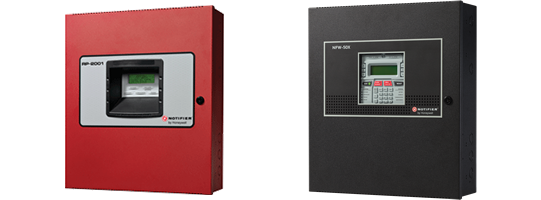
Understanding how these differences impact your upfront costs and ongoing costs over the lifetime of your fire alarm system along with the level of life safety protection and reliability they provide will help to drive your decision. High Rise Security Systems with SMG Security Holdings offers expertise in helping business and property managers evaluate the total costs of your fire alarm system while ensuring reliable life safety protection.
Conventional Fire Alarm System
Conventional fire alarm systems communicate with the main control panel through analog technology, with multiple devices including detection and notification devices making up ‘zones’. Analog systems rely on electrical currents to send signals to the control panel. Devices are designed to increase the electrical current in the circuit to trigger an alarm when exceeding predetermined levels.
Conventional fire alarm panels are limited in the information they provide. They can signal an alarm but will not reveal which device was activated or from what location. This might be adequate for small businesses or for single story, simple building layouts, whereas an addressable fire alarm system would be the only choice for other complex building layouts.
Consulting with a commercial fire and life safety system specialist will help you to consider all factors such as system and installation expenses, reliability, and functionality.
Commercial Addressable Fire Alarm Systems
An addressable fire alarm system uses digital technology to transfer information from networked devices to the main control panel, instead of the analog signals relying on changes in electrical current. Addressable systems transfer information to the control panel with binary code, various combinations of zeros and ones. Addressable systems are an absolute necessity for high-rise buildings, large or complex campuses.
Benefits of an Addressable System
An addressable commercial fire alarm system provides many benefits over a conventional system, with customization, less ongoing costs, and increased safety.
Customization
Addressable fire alarm systems can be customized with different devices having different thresholds to activate alarms, based on their location. You can also customize zones with scalable networks.
Less Ongoing Costs
While an addressable system may be a greater expense up front, it could cost less in the long run with installation, maintenance and upgrade expenses figured in.
Increased Safety
Since an addressable system lets fire fighters know exactly where the fire is, safety is improved over a conventional system where emergency responders are guessing exactly what area to target first.
Less False Alarms
Addressable fire alarm systems provide an increased level of safety over conventional systems with improved reliability. This also means less false alarms which saves time and money as many municipalities charge a fine for companies with multiple false alarms.
Commercial Fire Alarm Consulting
High Rise Security Systems with SMG Security Holdings provides commercial fire alarm system consulting, with decades of expertise in evaluating and choosing the best fire alarm system for businesses. We provide skilled fire alarm system design, with CAD software and an in-depth knowledge of fire and life safety code regulations. Our fire alarm technicians provide support, inspections, maintenance, and repairs.
HRSS/SMG offers vast experience in commercial fire and life safety systems. We help businesses in and around Chicago to protect what matters most with reliable fire alarm technology. Contact us to learn more about choosing the right type of fire alarm system for your business and learn the difference between a conventional and addressable fire alarm system.


